
|
COCOA - THE PLANT AND THE FRUIT
('Cacau
– a planta e o fruto')
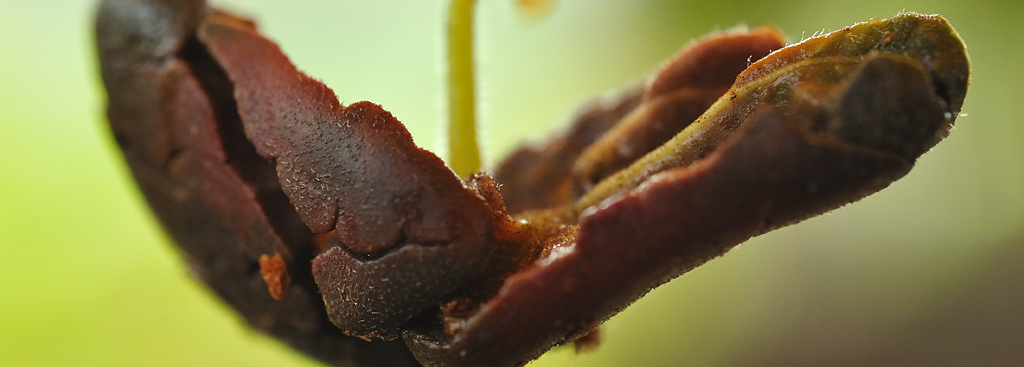 The
cocoa seedlings are sown in nursery beds before being transferred to
the plantation. Even the seedlings themselves look delicious –
just like chocolate but without the wonderful aroma.
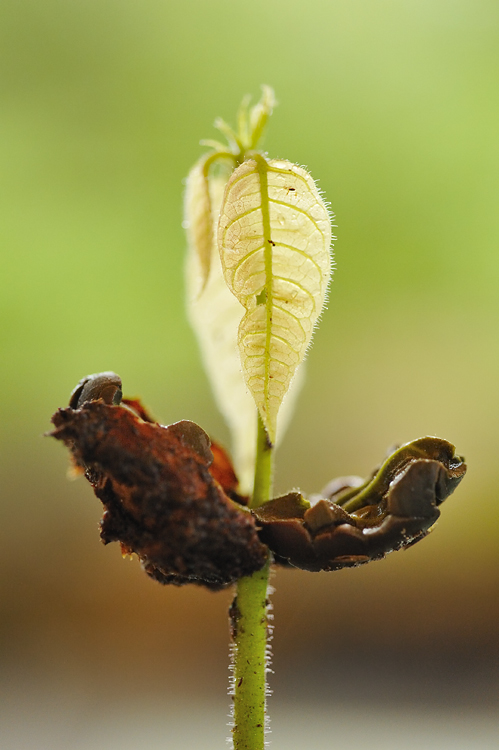 Seedling of the cocoa tree The
cocoa tree (“cacaueiro”) belongs to the mallow family which
comprises of approximately 20 species. These are evergreen plants and
small trees which grow in the undergrowth of the rain forests of Latin
America. Although the tree can reach heights of up to 15 metres, it is
cut back to about 4 metres on the plantations. It likes high humidity:
an average annual rainfall of about 2,000mm and requires mean annual
temperatures of between 25C and 28C. Quite a demanding character!
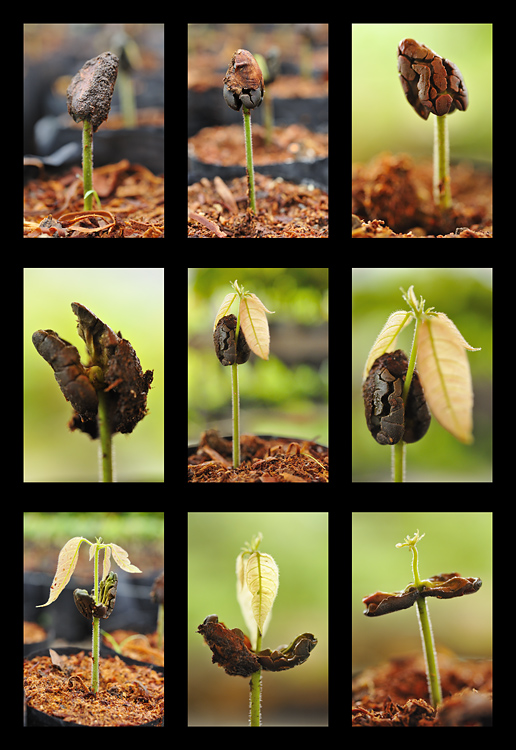 Poster illustrating the cocoa seedling in its different stages of development Cocoa
actually owes its botanical name “Theobroma Cacao L”
(Greek: theos = God, broma = food i.e. “Food of the Gods“)
to the Swedish naturalist Carl von Linne.
THE COCOA TREE
('O cacaueiro') Moving around in the shady cocoa plantation means adopting a stooping posture. The cocoa tree is a long, thin tree which grows in the shade of larger tropical trees. The leaves of banana plants give the perfect protection. As we are in the tropics, it is not only hot but also very humid. 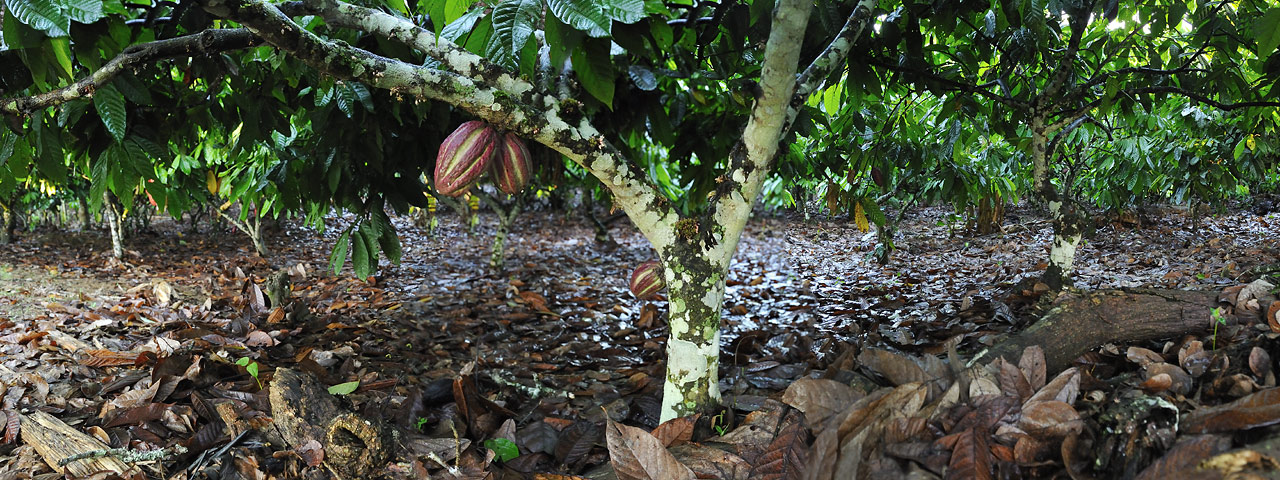 In the shade
of the cocoa tree
The
cocoa plant is a botanical peculiarity. The fruits grow directly on the
trunk; a phenomenon occurring in few other plants. It is an evergreen
and the fruits grow the whole year round, taking about 6 months to
mature. A healthy, mature tree produces several dozen fruits
annually.
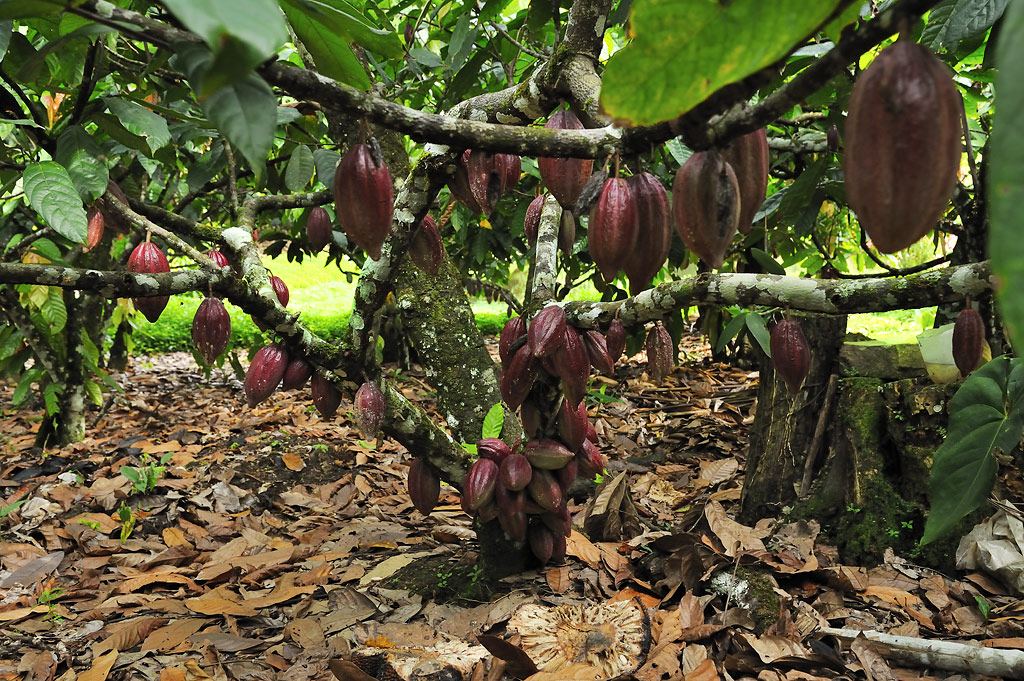 Cocoa tree laden with fruit 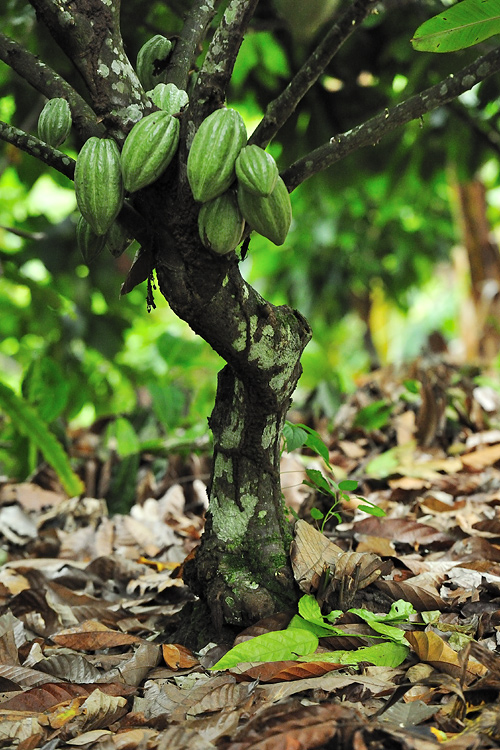 Cocoa tree with fruit 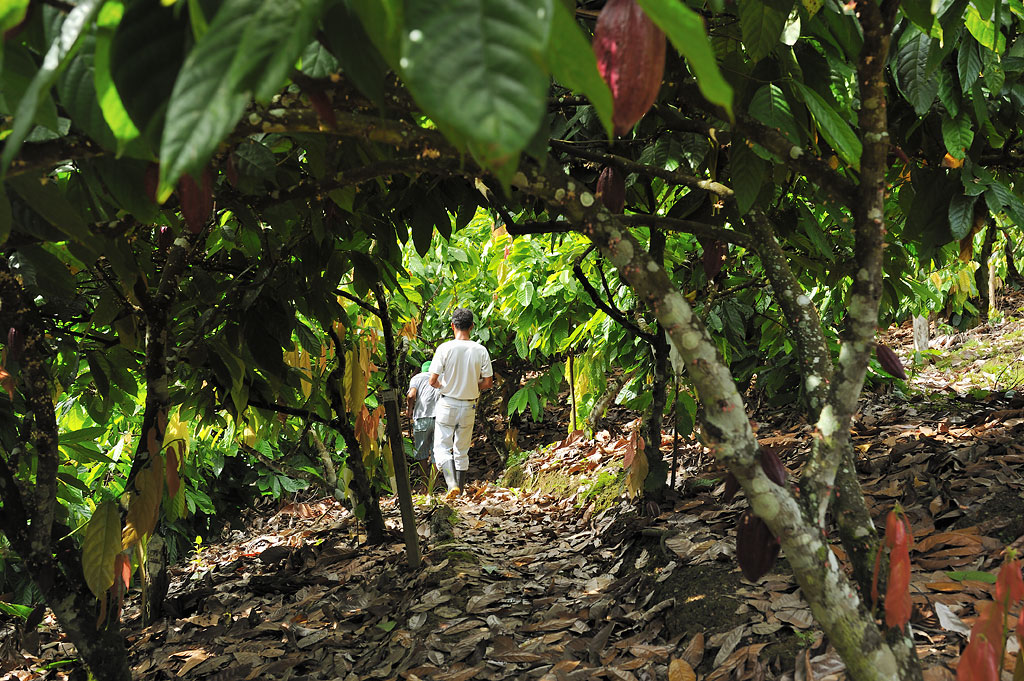 On the cocoa plantation 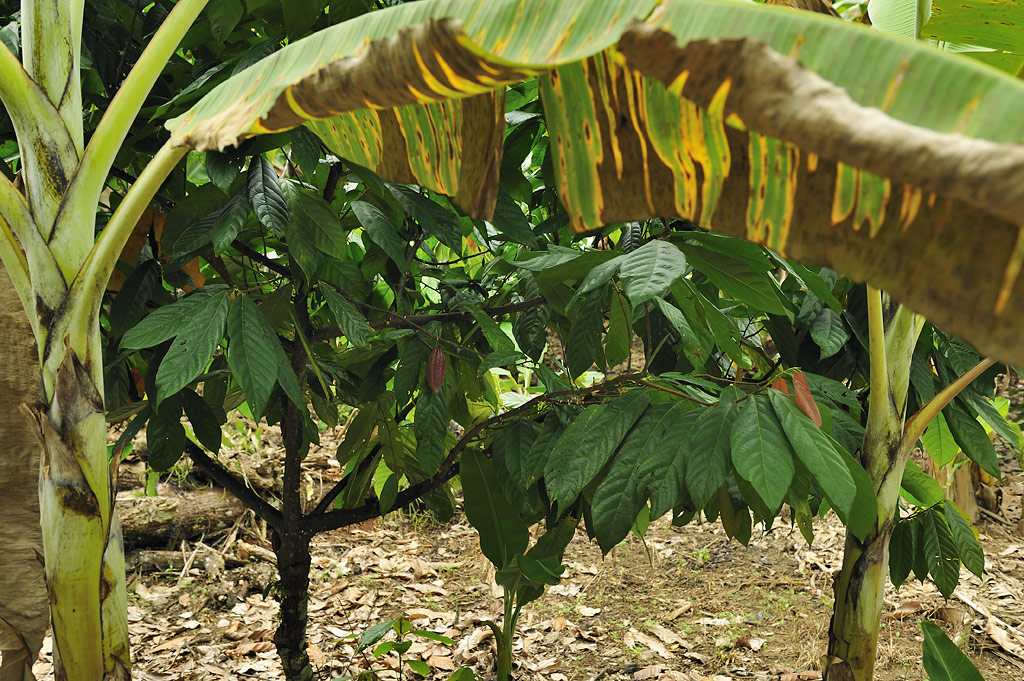 Cocoa trees require lots of shade. This is provided by banana plants and other tropical trees 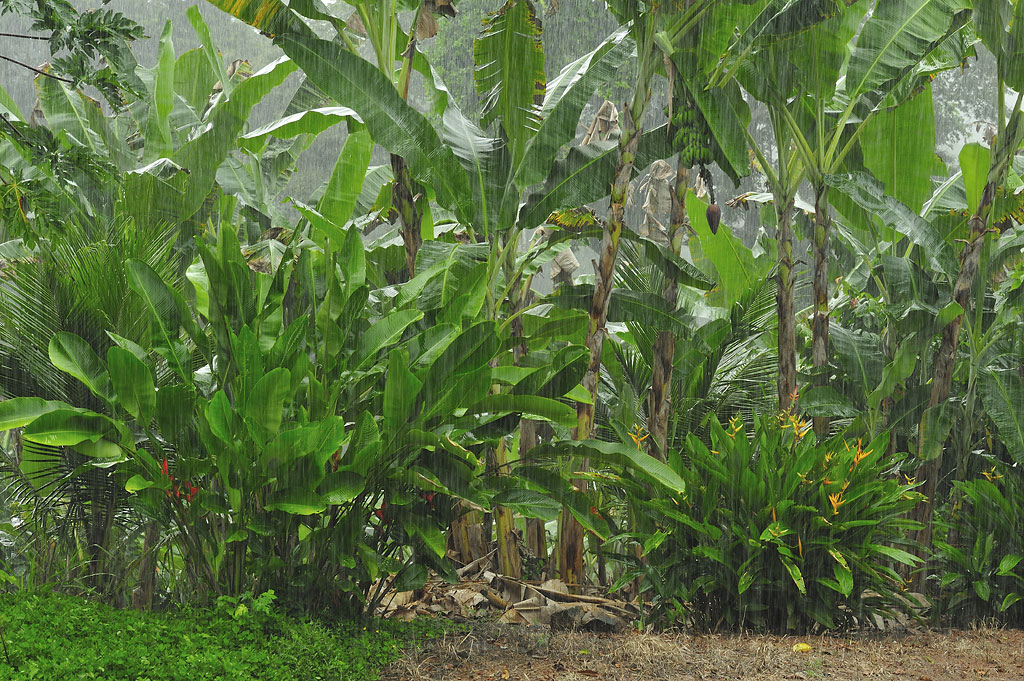 Tropical rain |
|
THE COCOA
FRUIT
('O fruto do cacaueiro') 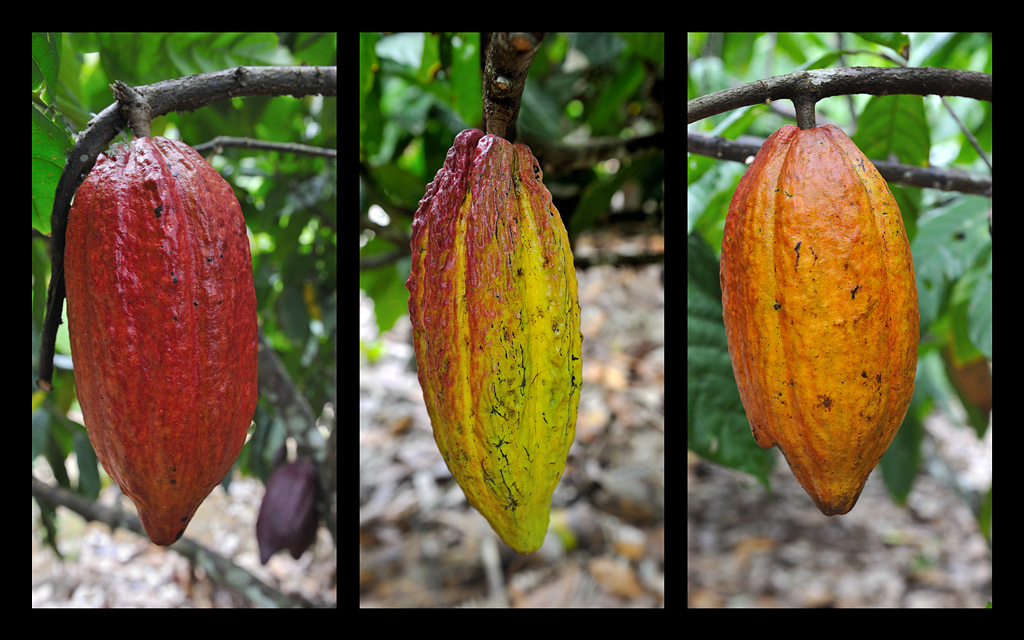 Cocoa Pods The
differing colours of cocoa fruits are characteristic of both variety
and degree of ripeness. This makes it difficult for the novice to
determine variety. For cocoa production worldwide, the three most
important types are “Criollo”, “Forasteiro” and
“Trinitario” with their corresponding varieties and
hybrids.
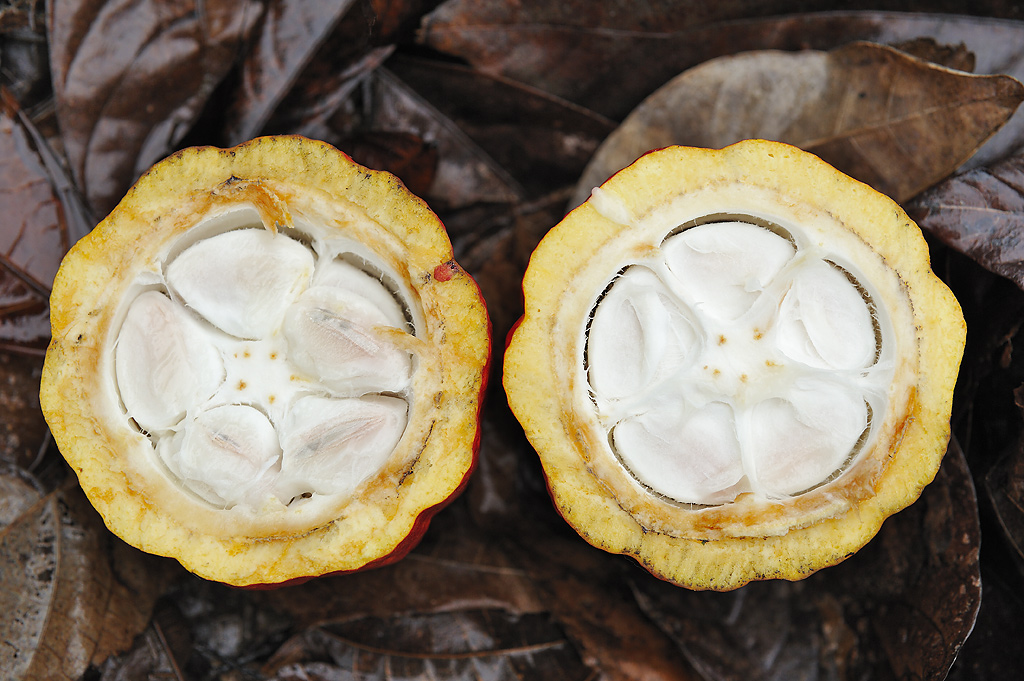 Cross-section of a Cocoa Pod The pod is a woody, leathery, cucumber-shaped fruit measuring approximately 25 cm in length. The skin of the pod is about 1 cm thick. Depending on the size, each fruit encases 25 to 50 cocoa seeds or beans, arranged in 5 columns and embedded in a white, fruity-sweet, delicious flesh.
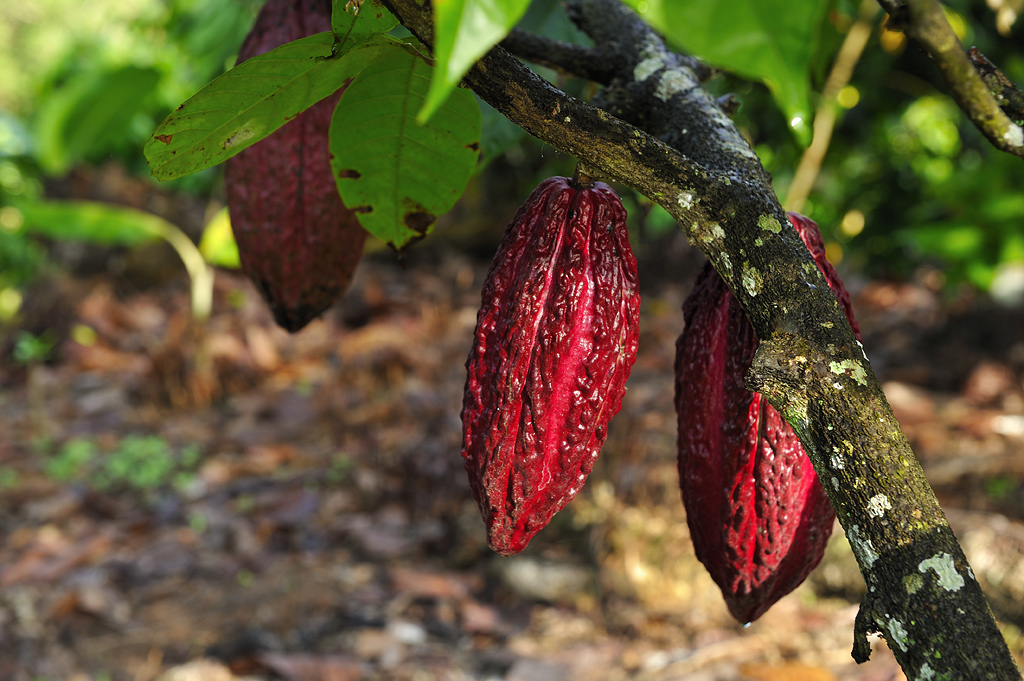 Mature Cocoa Fruit THE COCOA FLOWER ('A flor do cacaueiro') The
cocoa tree first produces flowers at the age of 2 to 3 years. It
flowers several times a year and simultaneously produces fruits. The
beautiful, bright, red and white flowers resemble orchids. Cocoa flowers are
pollinated not by bees but by tiny flies, almost invisible to the naked
eye.
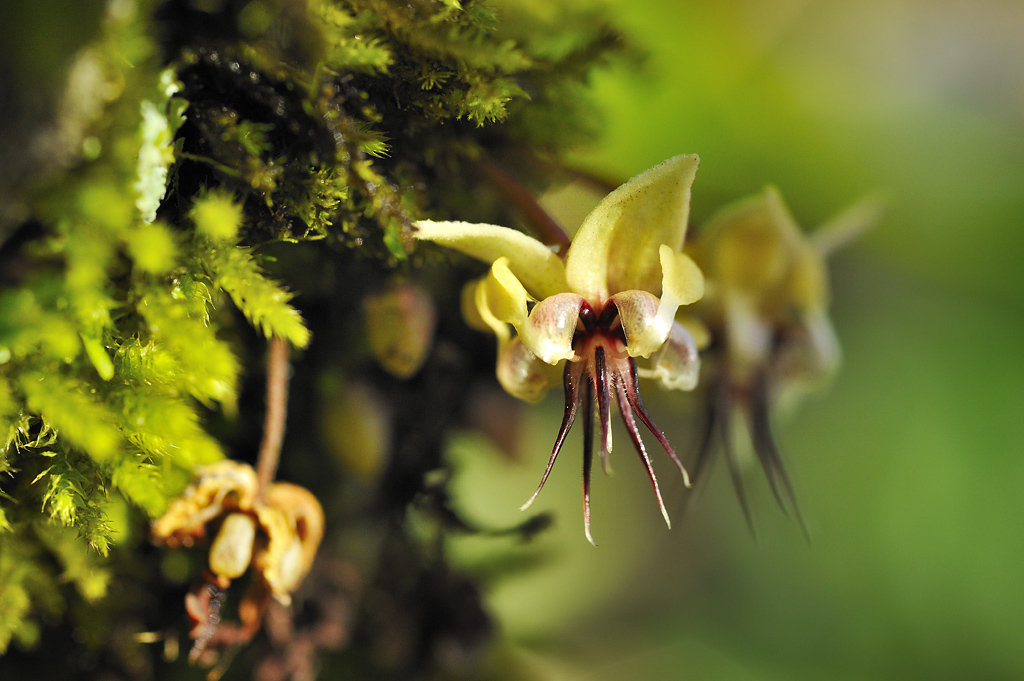 Cocoa Flowers (Macro: the flowers have a diameter of approximately 1 cm) 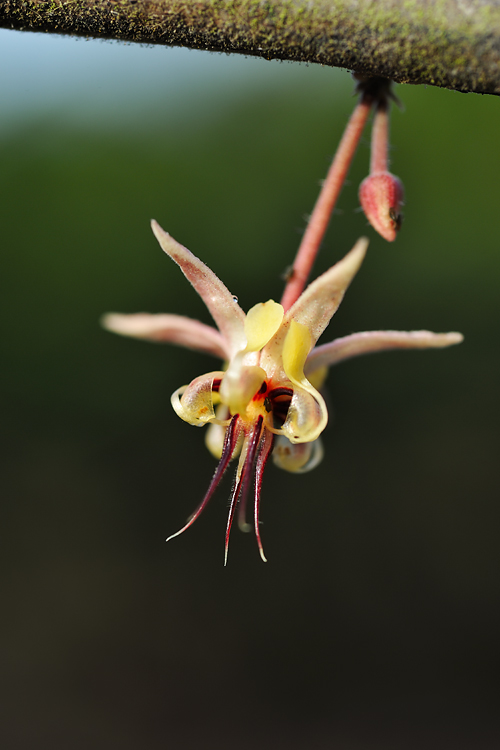 Cocoa Flower 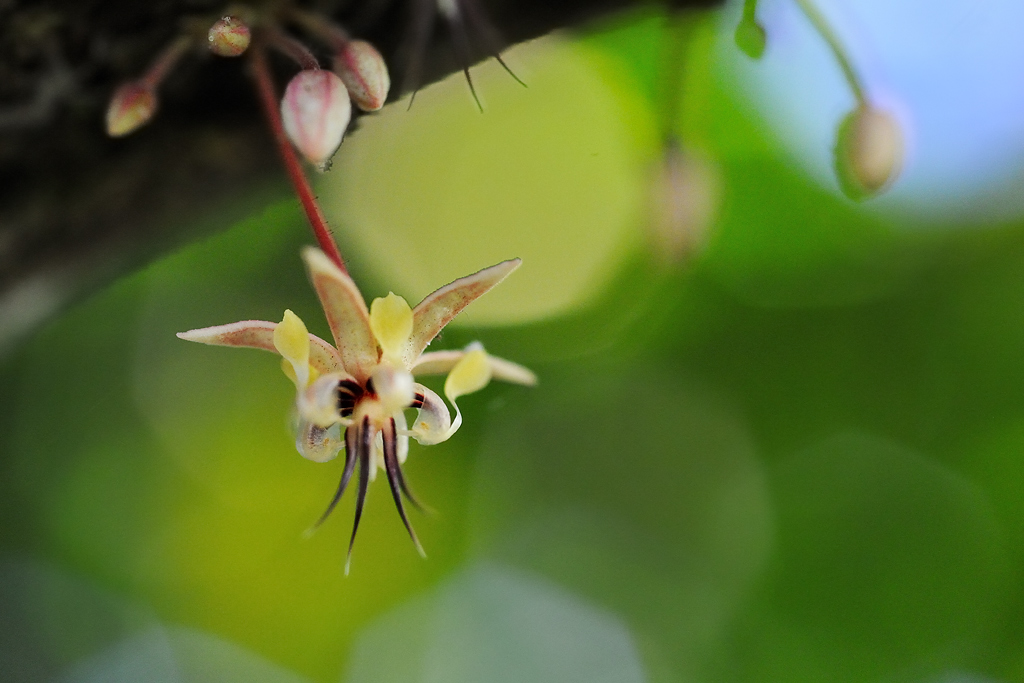 Cocoa Flower Each
plant produces thousands of flowers but only 5% of them are
successfully pollinated. On the plantation the flowers are artificially
pollinated in order to increase the productivity of the trees.
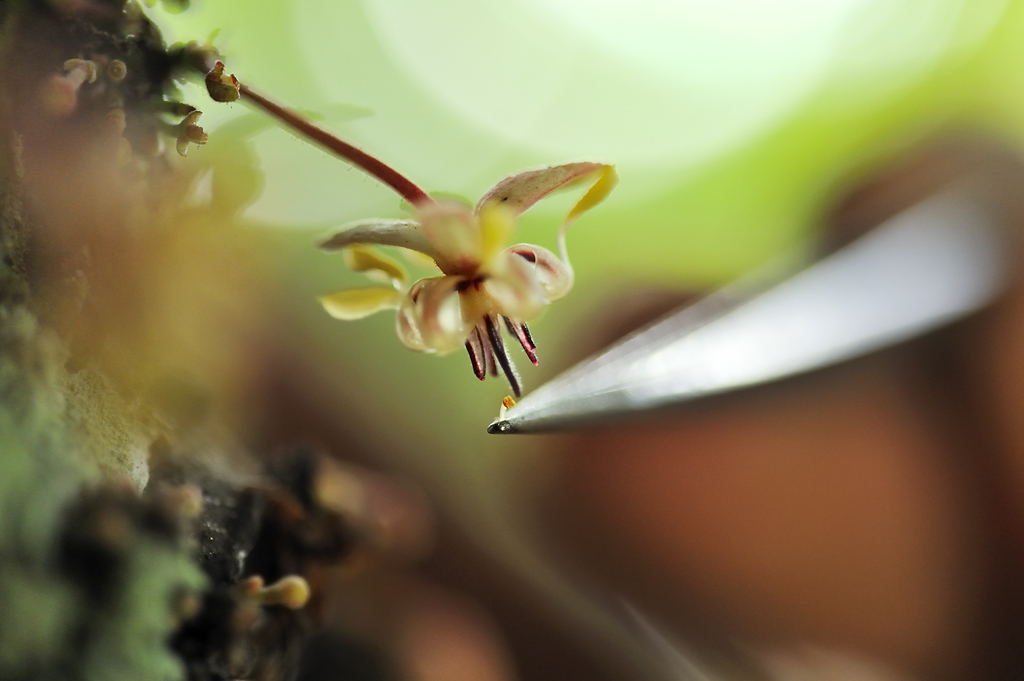 Artificial pollination of a cocoa flower with tweezers 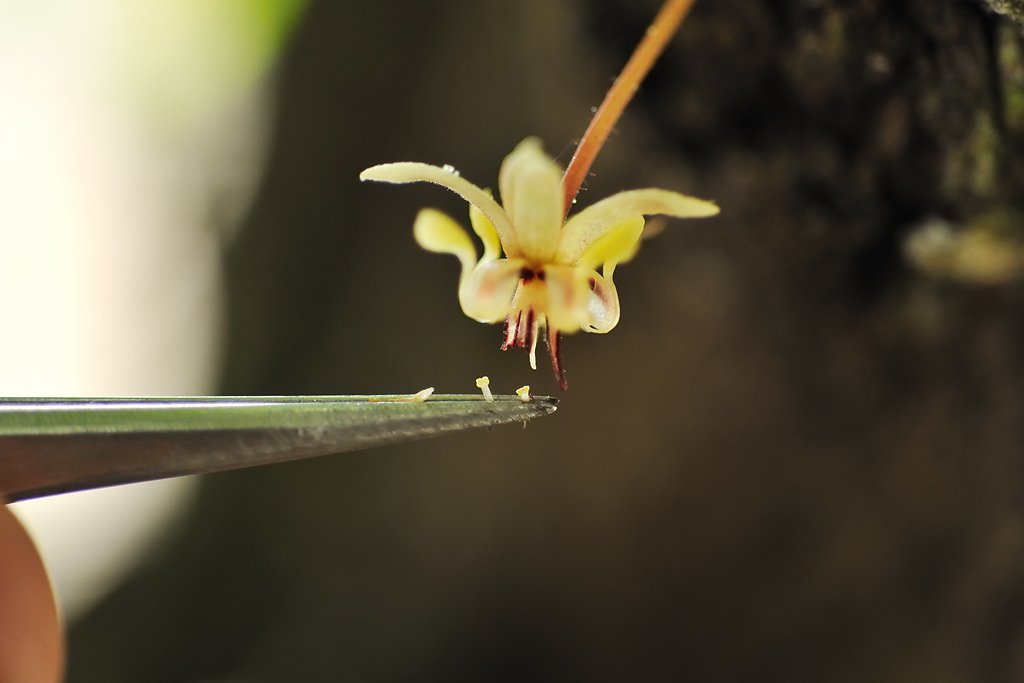 Artificial pollination of a cocoa flower With
a steady hand, Osmundo carefully transfers pollen from the anthers of
one flower to the stigma of another with a pair of tweezers. The
pollinated flower is then covered for a few days to protect it. “A few of us have received special training for this” explains Osmundo, bursting with pride.
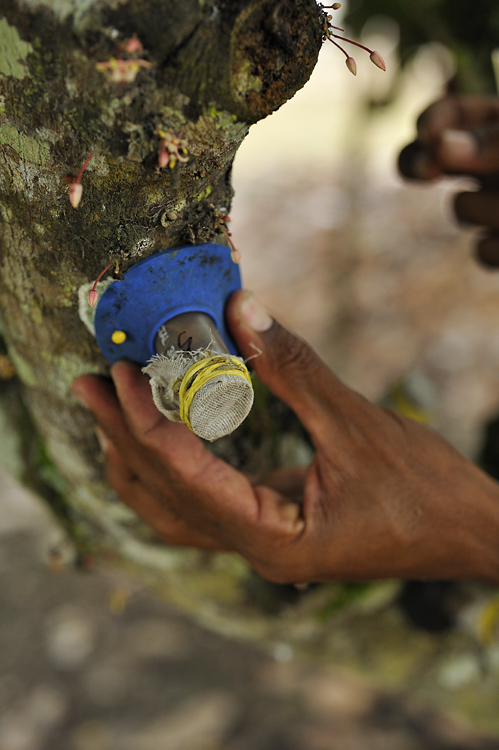 Cover protecting pollinated flowers |
| PEOPLE OF THE FARM, I ('Pessoas da fazenda, I') 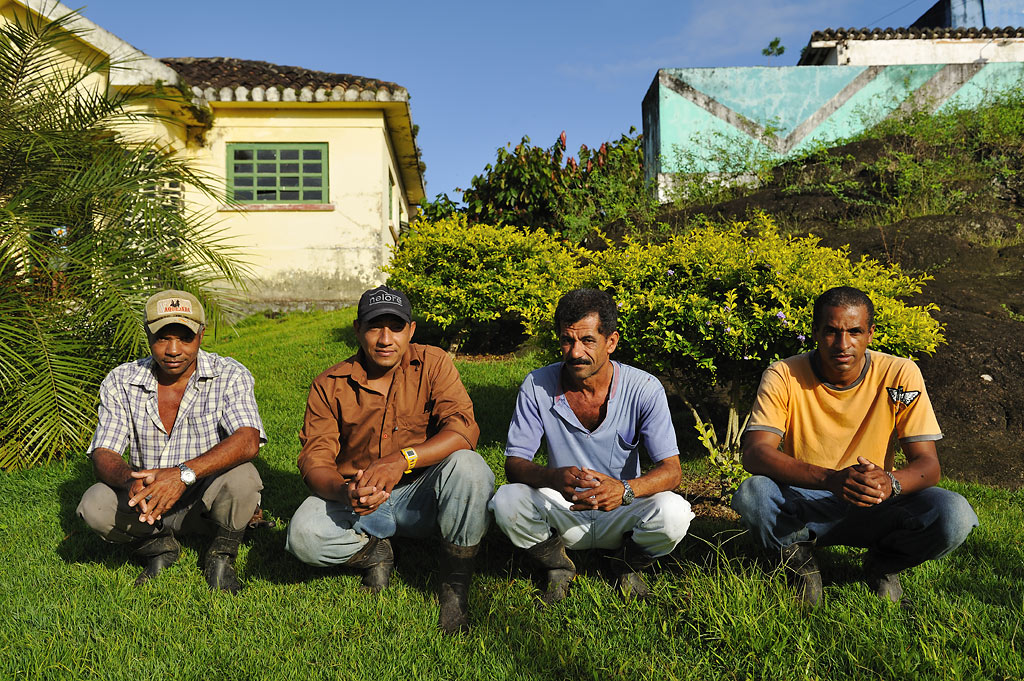 The Four Plantation Foremen 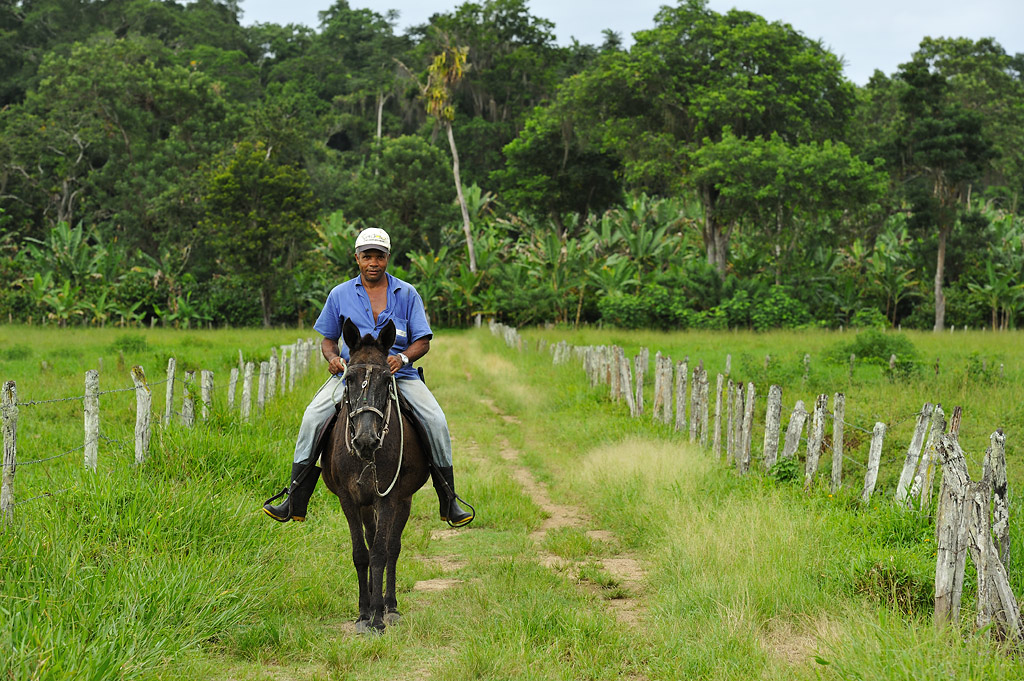 Zé Alberto, foreman, is responsible for 10 fields of cocoa and 20 workers, in the background, the cocoa plantation 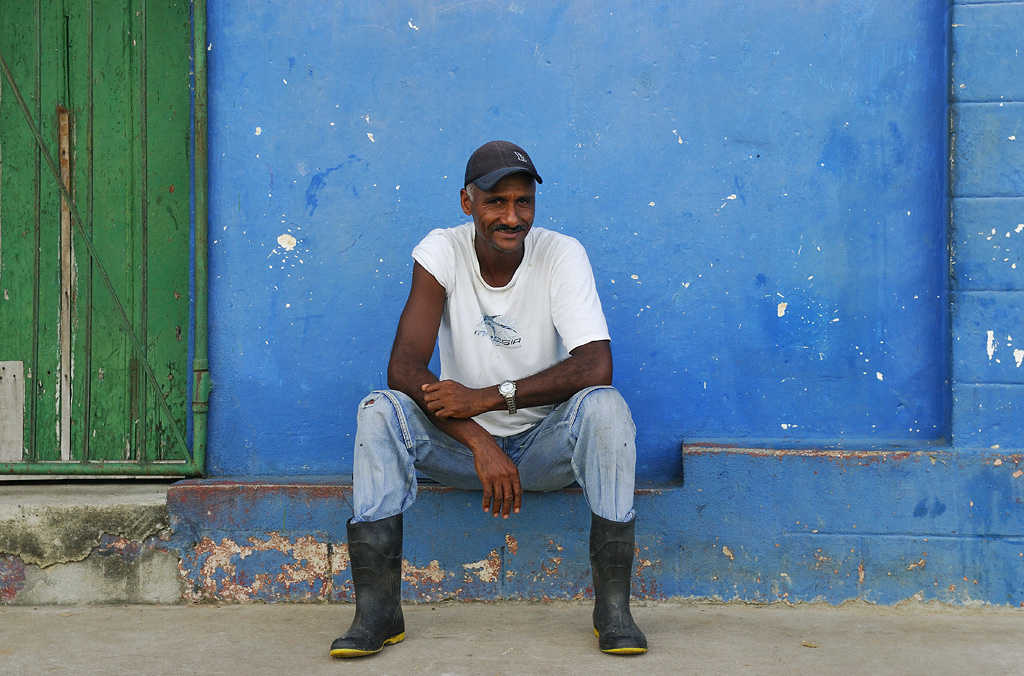 Joselito, domestic servant and caretaker ('caseiro') 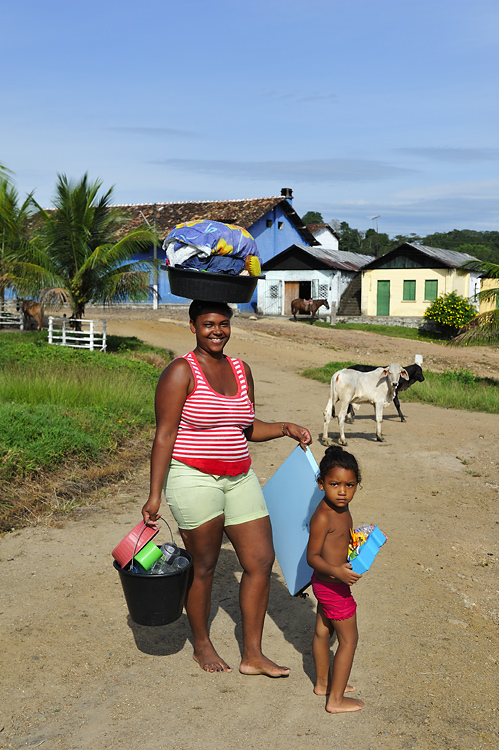 After washing by the river ... 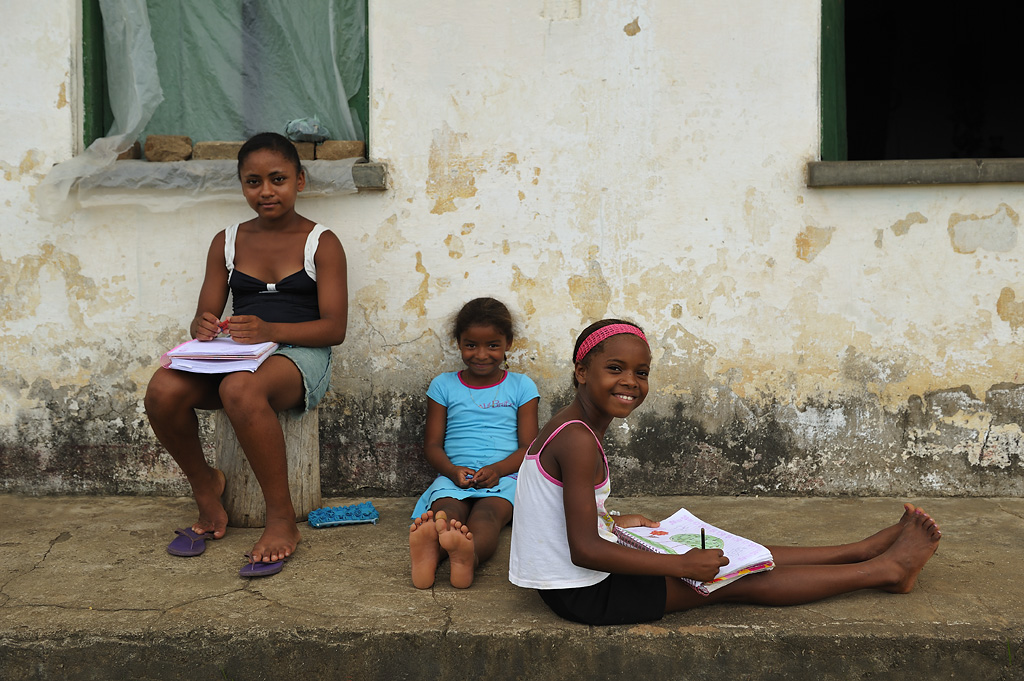 Farm Children ('crianças da fazenda'). After school it is time for homework! Well, more or less  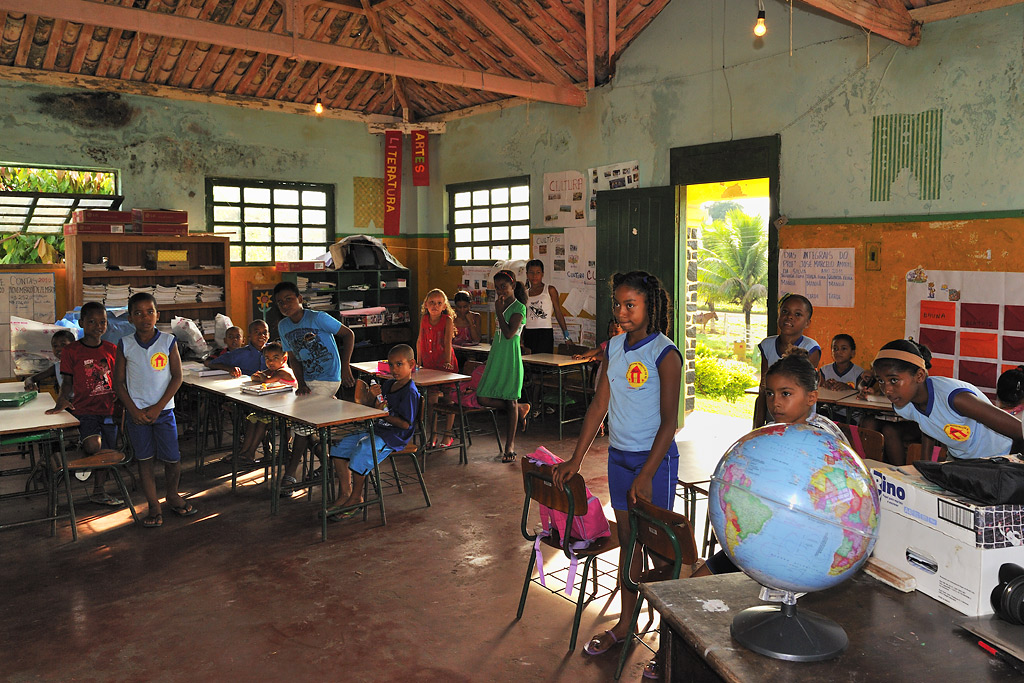 At the farm school the day always begins with a song 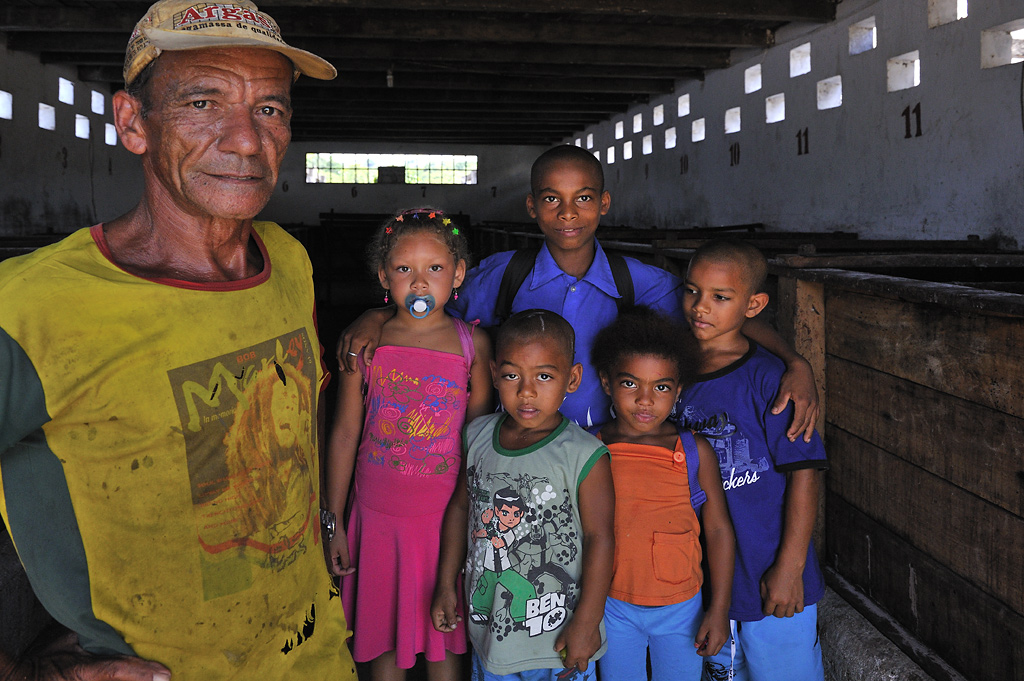 Long live the “dummy”! 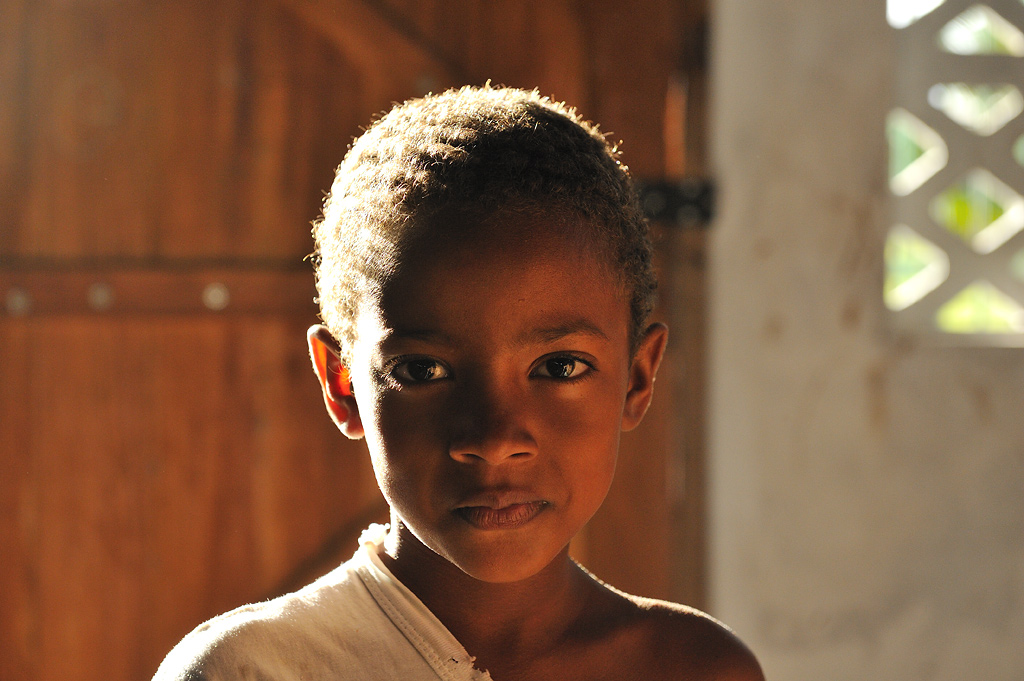 Son of a farm worker |